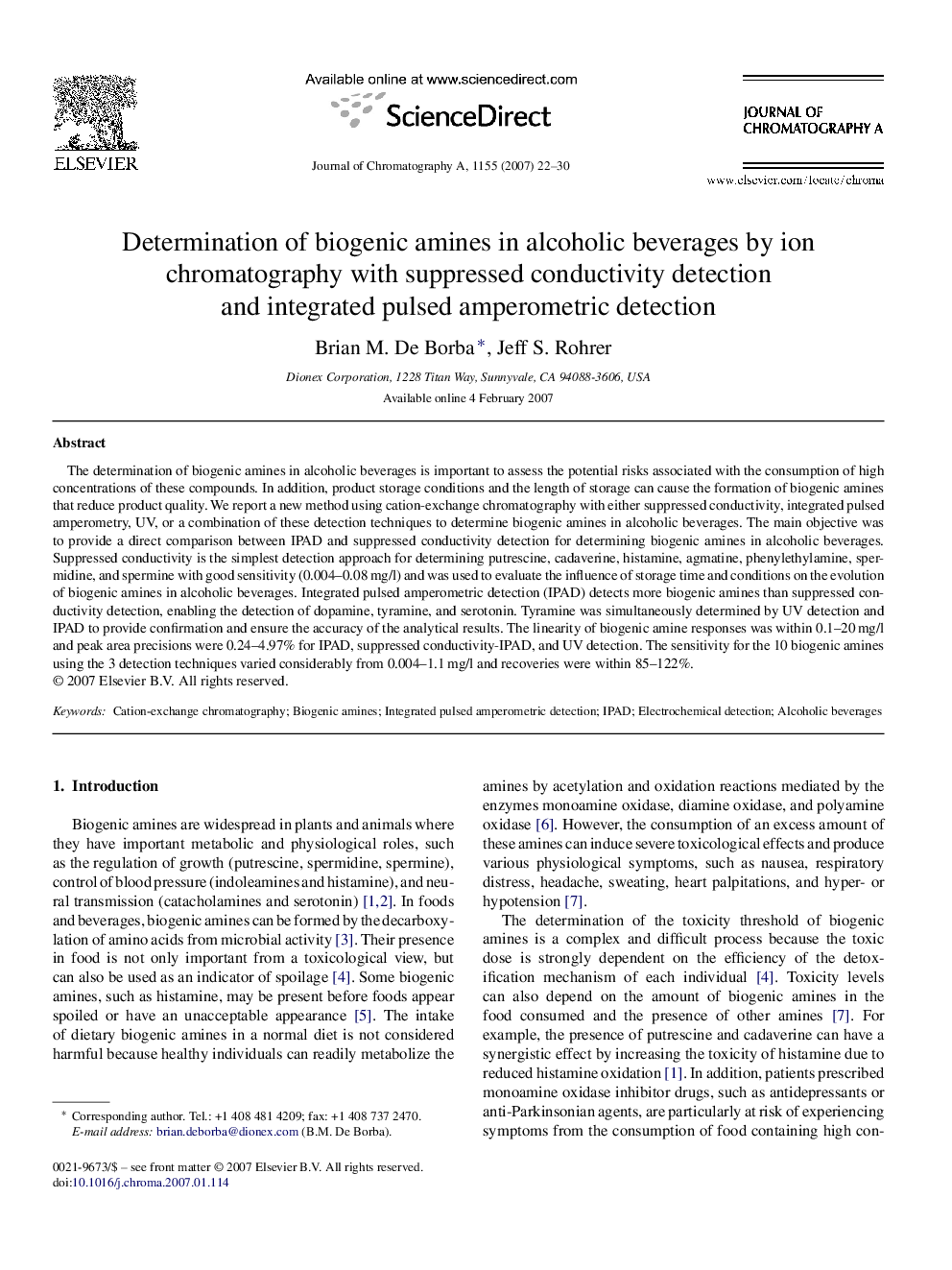| Article ID | Journal | Published Year | Pages | File Type |
|---|---|---|---|---|
| 1207469 | Journal of Chromatography A | 2007 | 9 Pages |
The determination of biogenic amines in alcoholic beverages is important to assess the potential risks associated with the consumption of high concentrations of these compounds. In addition, product storage conditions and the length of storage can cause the formation of biogenic amines that reduce product quality. We report a new method using cation-exchange chromatography with either suppressed conductivity, integrated pulsed amperometry, UV, or a combination of these detection techniques to determine biogenic amines in alcoholic beverages. The main objective was to provide a direct comparison between IPAD and suppressed conductivity detection for determining biogenic amines in alcoholic beverages. Suppressed conductivity is the simplest detection approach for determining putrescine, cadaverine, histamine, agmatine, phenylethylamine, spermidine, and spermine with good sensitivity (0.004–0.08 mg/l) and was used to evaluate the influence of storage time and conditions on the evolution of biogenic amines in alcoholic beverages. Integrated pulsed amperometric detection (IPAD) detects more biogenic amines than suppressed conductivity detection, enabling the detection of dopamine, tyramine, and serotonin. Tyramine was simultaneously determined by UV detection and IPAD to provide confirmation and ensure the accuracy of the analytical results. The linearity of biogenic amine responses was within 0.1–20 mg/l and peak area precisions were 0.24–4.97% for IPAD, suppressed conductivity-IPAD, and UV detection. The sensitivity for the 10 biogenic amines using the 3 detection techniques varied considerably from 0.004–1.1 mg/l and recoveries were within 85–122%.
